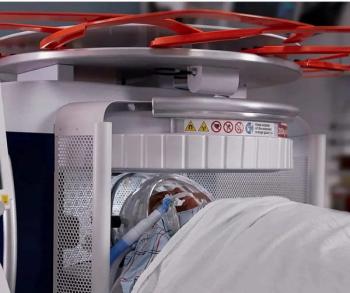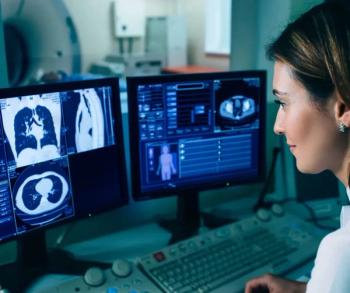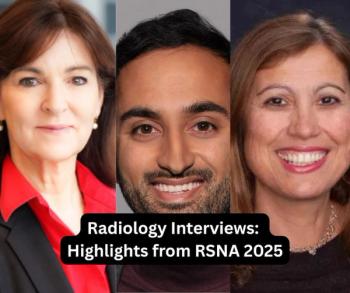New research suggests that the combination of key radiomic features and deep learning AI may significantly improve chest computed tomography (CT) differentiation of invasive adenocarcinoma (IAC), atypical adenomatous hyperplasia and adenocarcinoma in situ (AAH + AIS) and inflammatory nodules (IN).
For the retrospective study, recently published in European Radiology, researchers assessed the use of a deep learning AI software (uAI-Chest-Care, V1.0, United Imaging), which incorporated 3D morphometrics, texture parameters and CT attenuation metrics for the pathological classification of pulmonary nodules. The cohort was comprised of 462 pathologically confirmed pulmonary nodules, according to the study.
The study authors found that deep learning AI offered a 93.6 percent area under the curve (AUC) for detecting IAC, an 88.4 percent AUC for AAH + AIS and an 86.5 percent AUC for IN.
There was a substantial increase in mean CT attenuation value, ranging from -535.5 HU with AAH + AIS and -471.8 HU with minimally invasive adenocarcinoma (MIA) to -213.4 HU with IAC, according to the researchers. The research findings also showed that IAC nodules demonstrated the highest proportion of solid components (61.4 percent) in comparison to MIA (21.8 percent) and AAH + AIS (10.2 percent).
“By integrating traditional morphological assessments with high-dimensional radiomic features, we systematically characterized imaging phenotypes corresponding to each histologic subtype. Our results demonstrated a clear imaging continuum from AAH + AIS to IAC, reflected by progressive increases in CT attenuation, volume, entropy, and structural complexity,” wrote lead study author Haoyuan Zhang, M.D., who is affiliated with the Department of Radiology at the Mengcheng County No. 1 People’s Hospital in Mengcheng, China, and colleagues.
Three Key Takeaways
- High diagnostic performance. The deep learning AI model integrating radiomic and morphologic CT features achieved strong accuracy for differentiating invasive adenocarcinoma (AUC 93.6 percent), AAH + AIS (AUC 88.4 percent), and inflammatory nodules (AUC 86.5 percent).
- Quantitative imaging markers of invasiveness. Increasing CT attenuation and higher proportions of solid components correlated with greater tumor invasiveness, suggesting that radiomic and morphologic metrics can serve as non-invasive indicators of histologic progression in pulmonary nodules.
- Challenge with minimally invasive adenocarcinoma. The AI model showed reduced performance for MIA (AUC 70.7 percent) due to overlapping radiomic features, highlighting the need for multimodal integration with clinical and longitudinal CT data to improve classification accuracy.
The researchers noted that the deep learning AI software provided lower detection for MIA with an AUC of 70.7 percent.
“This difficulty is largely due to the overlapping ranges of key radiomic features like entropy and skewness, which fall into a “gray zone” between non-invasive and fully invasive lesions. Improving MIA classification will likely require a multimodal approach, integrating not just quantitative data but also key clinical variables and dynamic changes observed on follow-up CT scans, such as the growth of a solid component,” posited Zhang and colleagues.
(Editor’s note: For related content, see “CT-Based Deep Learning Model May Reduce False Positives with Indeterminate Lung Nodules by Nearly 40 Percent,” “Can Deep Learning Enhance Low-Dose Chest CT Assessment of Lung Cancer Risk?” and “Can CT-Based Deep Learning Bolster Prognostic Assessments of Ground-Glass Nodules?”)
In regard to study limitations, the authors acknowledged the potential of selection bias with the study’s emphasis on surgically resected lung nodules and noted the use of a single AI platform may thwart extrapolation of the outcomes when employing other AI software.





























